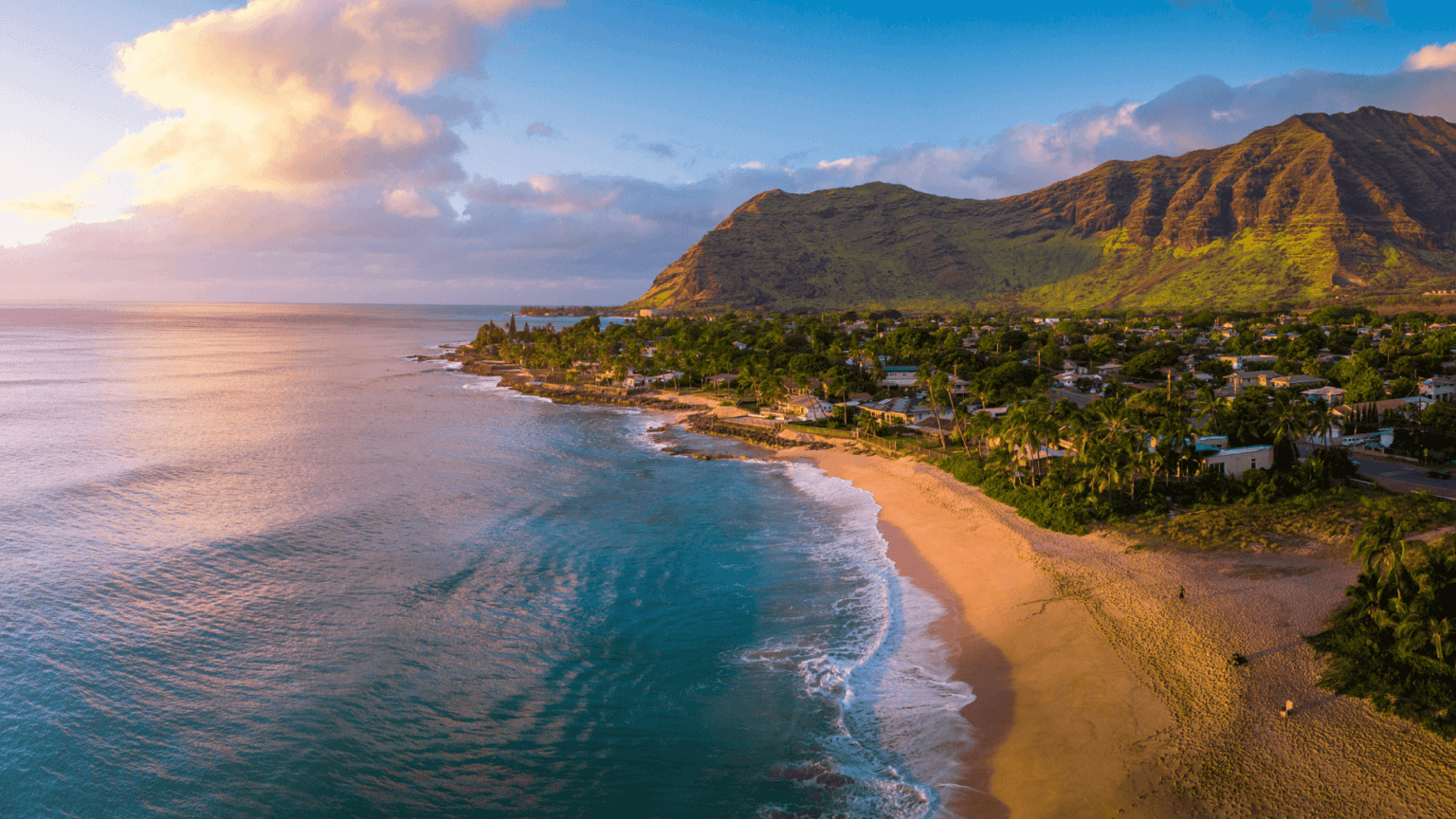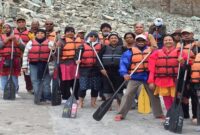Hawaiian Tours for Seniors unlock a world of idyllic landscapes and enriching cultural experiences tailored for mature travelers. This guide explores diverse tour options, emphasizing accessibility and safety, ensuring a memorable and comfortable Hawaiian vacation. We delve into various tour types, from gentle walking tours to accessible cruises, considering health and safety precautions, suitable accommodations, and culturally enriching activities designed for seniors’ preferences and physical capabilities. Planning your dream Hawaiian getaway becomes effortless with our comprehensive guide.
We’ll cover everything from choosing the right tour type based on your mobility and fitness level, to navigating transportation and finding senior-friendly accommodations. We’ll also explore ways to create a budget-friendly trip, ensuring your Hawaiian adventure is both enriching and affordable. Discover the perfect balance of relaxation, exploration, and cultural immersion, designed specifically for your needs and preferences as a senior traveler.
Tour Types and Accessibility
Choosing the right Hawaiian tour for seniors requires careful consideration of accessibility and physical capabilities. A variety of options exist, ensuring a memorable and comfortable experience for all visitors, regardless of mobility. This section details various tour types and their accessibility features to help you plan your perfect Hawaiian getaway.
Hawaiian Tour Options for Seniors
Hawaii offers a diverse range of tours catering to different interests and mobility levels. Guided bus tours provide a convenient and comprehensive way to explore multiple locations, often including stops at significant historical sites, scenic overlooks, and cultural attractions. These tours typically offer wheelchair access and restroom breaks at regular intervals. Small group adventures offer a more intimate and personalized experience, often focusing on specific activities like hiking (with varying difficulty levels) or cultural immersion. Private transportation options, such as hiring a car service or utilizing wheelchair-accessible taxis, provide maximum flexibility and control over the itinerary, allowing seniors to customize their experience to their specific needs and preferences. Cruise excursions provide a unique perspective, offering stunning coastal views and access to islands and locations otherwise difficult to reach. However, accessibility on cruise ships and tenders varies, so it is crucial to check specifics before booking.
Comparing Tour Styles for Senior-Friendly Travel
Each tour style presents unique advantages and disadvantages for senior travelers. Guided bus tours are generally the most accessible, offering pre-planned itineraries and convenient transportation. However, they may involve more walking than some seniors can comfortably manage. Small group adventures can be more physically demanding, depending on the activity chosen, but they offer a more personalized and engaging experience. Private transportation offers ultimate flexibility but may be more expensive. Cruise excursions can be spectacular but require careful consideration of embarkation and disembarkation procedures, and potential for sea sickness. Choosing the right style depends on individual preferences and physical capabilities.
Examples of Senior-Friendly Itineraries
The following table illustrates examples of itineraries catering to different mobility levels and physical fitness. These are examples and specific itineraries will vary based on tour operator and time of year.
| Tour Type | Accessibility Features | Fitness Level | Estimated Duration |
|---|---|---|---|
| Guided Bus Tour of Oahu | Wheelchair accessible bus, frequent restroom stops, minimal walking at each stop. | Low | 8 hours |
| Small Group Walking Tour of Historic Lahaina (Maui) | Paved walkways, slower pace, optional rest stops. May not be suitable for those with significant mobility limitations. | Moderate | 4 hours |
| Private Car Tour of Kauai’s North Shore | Fully customizable itinerary, allows for frequent stops and adjustments based on individual needs. | Low to Moderate | 6 hours |
| Cruise Excursion to Molokini Crater (Maui) | Accessibility varies by cruise line; check specific ship features and tender access. May involve some stairs or ramps. | Low to Moderate (depending on cruise line and specific excursion) | 5 hours |
Accommodation and Transportation
Choosing the right accommodation and transportation is crucial for a smooth and enjoyable Hawaiian vacation, especially for senior travelers. Careful consideration of accessibility features and travel methods will ensure a comfortable and memorable experience. This section will detail senior-friendly accommodation options and accessible transportation methods available throughout the islands.
Hawaii offers a range of accommodations catering to the needs of senior travelers. Many hotels and resorts provide accessible rooms featuring features such as roll-in showers, grab bars, and wider doorways. Furthermore, several assisted living facilities are located near popular attractions, offering a convenient and supportive environment for those requiring additional assistance. Choosing the right option will depend on individual needs and preferences.
Senior-Friendly Accommodations in Hawaii
Several hotels across the islands offer accessible rooms designed to cater to the needs of senior citizens. For example, the Hyatt Regency Waikiki Beach Resort and Spa in Oahu and the Grand Hyatt Kauai Resort & Spa are known for their accessible rooms and amenities. These typically include features such as lowered countertops, ramps, and wider doorways. In addition to hotels, some assisted living facilities, often located near popular attractions, provide a supportive environment for seniors who may require more assistance. These facilities often offer transportation services to nearby attractions, making it easier to explore the islands.
Accessible Transportation Options in Hawaii
Planning transportation in advance is essential for a seamless trip. Several accessible transportation options are available, ensuring seniors can comfortably navigate the islands. This includes wheelchair-accessible taxis, shuttle services, and adapted rental vehicles. The choice will depend on individual needs and travel plans.
A sample itinerary might include:
Day 1: Arrive at Honolulu International Airport (HNL). Pre-booked wheelchair-accessible taxi transfers to a hotel with accessible rooms. Afternoon: Explore Waikiki Beach using the Waikiki Trolley, which offers accessible routes.
Day 2: Utilize a wheelchair-accessible shuttle service for a tour of Pearl Harbor.
Day 3: Rent a wheelchair-accessible van for a day trip to explore other areas of Oahu.
Comparison of Transportation Methods
Several transportation options are available in Hawaii, each with its own advantages and disadvantages for senior travelers.
- Wheelchair-Accessible Taxis:
- Advantages: Convenient door-to-door service, readily available in major tourist areas.
- Disadvantages: Can be expensive, potentially longer wait times during peak hours.
- Shuttle Services:
- Advantages: Often more affordable than taxis, can cover longer distances.
- Disadvantages: Less flexibility in terms of scheduling and destinations, may require pre-booking.
- Rental Cars (Wheelchair Accessible):
- Advantages: Maximum flexibility and independence, allows exploration at one’s own pace.
- Disadvantages: Requires a valid driver’s license, can be challenging to navigate in some areas, parking can be limited.
- Public Transportation (Buses):
- Advantages: Affordable, covers a wide area.
- Disadvantages: Accessibility varies, may require navigating steps or crowded spaces, less convenient than other options.
Cultural Experiences and Activities
Hawaii offers a wealth of cultural experiences perfectly suited for seniors, emphasizing gentle exploration and mindful engagement. Our tours are designed to provide enriching interactions with Hawaiian history and traditions without demanding strenuous physical activity. We prioritize comfort and accessibility, ensuring a memorable and enjoyable experience for all participants.
Accessible Historical Sites and Landmarks
Many significant historical sites in Hawaii offer excellent accessibility features for seniors. For example, the Iolani Palace in Honolulu, the only official residence of royalty in the United States, provides wheelchair access and ramps throughout the building. Visitors can explore the opulent state rooms and learn about the fascinating history of the Hawaiian monarchy at their own pace. Similarly, the USS Arizona Memorial at Pearl Harbor offers accessible pathways and elevators for easy navigation, allowing seniors to pay their respects and learn about this pivotal moment in history. Many museums, such as the Polynesian Cultural Center, also offer wheelchair rentals and accessible restrooms. Prior booking is always recommended to ensure smooth access and availability of any assistive devices.
Low-Impact Activities for Seniors
We understand that physical exertion should be kept to a minimum for our senior travelers. Therefore, we have curated a selection of activities designed for relaxation and gentle engagement.
- Relaxing Beach Visits: Enjoy the tranquility of Hawaii’s stunning beaches. Many beaches offer calm, shallow waters perfect for gentle wading or simply relaxing on the soft sand, taking in the breathtaking views. Wheelchair access to certain beach areas is often available; however, it is best to check the accessibility features of specific beaches beforehand. Consider beaches like Hapuna Beach State Recreation Area on the Big Island, known for its calm waters and wide sandy expanse.
- Cultural Demonstrations: Immerse yourselves in Hawaiian culture through captivating demonstrations of traditional arts like lei making, ukulele playing, or hula dancing. These performances are usually held in comfortable settings with ample seating and offer a rich insight into Hawaiian traditions without requiring any physical participation.
- Gentle Nature Walks: Explore Hawaii’s natural beauty through short, paved nature trails. Many parks and gardens offer accessible pathways, allowing seniors to enjoy the lush landscapes and breathtaking scenery at a leisurely pace. For example, the Ho’omaluhia Botanical Garden on Oahu features paved walkways and benches, making it ideal for a peaceful stroll.
Budgeting and Planning
Planning a Hawaiian senior tour requires careful budgeting to ensure a memorable and stress-free experience. A well-structured budget considers various factors, allowing for flexibility while staying within financial limits. This section outlines a realistic budgeting approach and provides practical tips for cost-effective planning.
Creating a Realistic Budget
Developing a comprehensive budget involves itemizing all anticipated expenses. Begin by estimating airfare costs, which can fluctuate based on booking time and destination. For example, a round-trip flight from the West Coast of the US to Oahu in the off-season might cost between $500-$800, while peak season flights can easily exceed $1000. Next, factor in accommodation costs. Consider the duration of your stay and choose lodging options that fit your budget, such as budget-friendly hotels, condos, or vacation rentals. A week’s stay in a mid-range hotel could cost between $700-$1400 depending on location and amenities. Allocate funds for daily expenses, including meals, transportation (rental car, taxis, or public transport), activities, and entrance fees. A reasonable daily allowance could range from $100-$200 per person depending on dining choices and activities. Finally, include a contingency for unforeseen medical expenses. Travel insurance is highly recommended to cover potential medical emergencies and trip interruptions. A comprehensive plan might cost between $100-$200 per person. By meticulously adding these costs, a realistic total budget can be determined.
Booking Tours and Accommodations
Booking tours and accommodations in advance is crucial, especially during peak season. Websites like Expedia, Kayak, Booking.com, and TripAdvisor offer convenient search tools to compare prices and availability across various hotels and tour operators. Many websites also provide senior discounts and special offers. For tours, consider booking directly with local operators or through reputable travel agencies specializing in senior travel. These agencies often provide curated itineraries designed to cater to the specific needs and preferences of older travelers. Reading reviews and comparing options is highly recommended to find suitable and reliable services. Confirming booking details, including cancellation policies and payment methods, is also essential.
Saving Money on a Hawaiian Senior Tour
Several strategies can help reduce overall tour costs. Consider traveling during the off-season (avoiding peak summer months) to find lower airfare and accommodation rates. Look for senior discounts offered by airlines, hotels, and tour operators. Many establishments provide discounts for travelers aged 65 and above. Opt for cost-effective transportation options like public transport or ride-sharing services instead of renting a car, particularly if you are staying in a central location. Pack snacks and drinks to minimize dining expenses, especially for lunches. Take advantage of free activities, such as hiking scenic trails, visiting beaches, and exploring local parks. Consider purchasing a Go Oahu Card or similar attraction pass if you plan to visit numerous paid attractions, as it can provide significant savings. Finally, researching free events and festivals can add unique cultural experiences without incurring additional costs.
Visual Representation of a Sample Itinerary
This section provides a detailed visual description of a sample 7-day Hawaiian senior tour itinerary. The itinerary focuses on accessible activities and comfortable accommodations, prioritizing relaxation and cultural immersion suitable for older travelers. Each day’s activities are presented in a way that allows for easy visualization of the tour’s pace and content.
Seven-Day Hawaiian Senior Tour Itinerary: Accessible Adventures
This itinerary prioritizes accessible locations and activities, ensuring a comfortable and enjoyable experience for all participants. The focus is on gentle exploration and cultural immersion.
Day 1: Arrival in Honolulu & Waikiki Exploration. Imagine arriving at Honolulu International Airport (HNL), being greeted by friendly staff, and transferring to a comfortable hotel in Waikiki with accessible rooms and amenities. The afternoon is spent leisurely exploring Waikiki Beach, perhaps enjoying a gentle stroll along the shore or relaxing with a refreshing drink at a beachfront café with ocean views. The evening concludes with a delicious dinner at a restaurant featuring authentic Hawaiian cuisine, easily accessible by wheelchair or with assistance.
Day 2: Pearl Harbor & Honolulu History. A guided tour of Pearl Harbor, utilizing accessible transportation and pathways, provides a moving and informative experience. The afternoon involves exploring historic Honolulu, visiting Iolani Palace (with consideration for accessibility features), and perhaps enjoying a traditional Hawaiian luau with accessible seating and entertainment.
Day 3: Diamond Head & Scenic Views. Enjoy a gentle drive up Diamond Head, stopping at various accessible viewpoints for breathtaking panoramic views of Waikiki and the Pacific Ocean. This is followed by some relaxing time at a peaceful accessible garden, providing a calming environment to soak in the beauty of the island.
Day 4: Island Transfer to Maui & Relaxation. A comfortable and accessible flight to Maui followed by transfer to a luxurious resort with accessible rooms and amenities. The afternoon is dedicated to relaxation, perhaps by the pool or on the beach, allowing time for rest and rejuvenation.
Day 5: Road to Hana (Partial) & Coastal Wonders. A modified Road to Hana tour, focusing on accessible portions of the scenic route, showcases Maui’s stunning coastline. The tour will include stops at accessible viewpoints and attractions, allowing for ample opportunities to take in the natural beauty without strenuous activity. The pace will be leisurely, with ample time for rest stops.
Day 6: Haleakala Sunrise (Optional) & Upcountry Maui. For those with the stamina and desire, an optional, accessible sunrise tour of Haleakala National Park is offered. Alternatively, participants can enjoy a relaxing day exploring the upcountry region of Maui, visiting accessible farms, art galleries, or enjoying a peaceful picnic in a scenic location.
Day 7: Departure from Maui. Enjoy a final Hawaiian breakfast before transferring to Kahului Airport (OGG) for your departure, filled with cherished memories of a relaxing and enriching Hawaiian adventure.
Conclusion
Planning a Hawaiian vacation as a senior should be an exciting prospect, not a daunting task. By carefully considering accessibility, safety, and your personal preferences, you can craft an unforgettable Hawaiian experience. Remember to prioritize your health and well-being, choose activities that match your fitness level, and book accommodations and tours well in advance. With thorough planning and the right resources, your Hawaiian adventure promises a blend of relaxation, cultural immersion, and the creation of lasting memories. Embrace the Aloha spirit and enjoy the journey!




